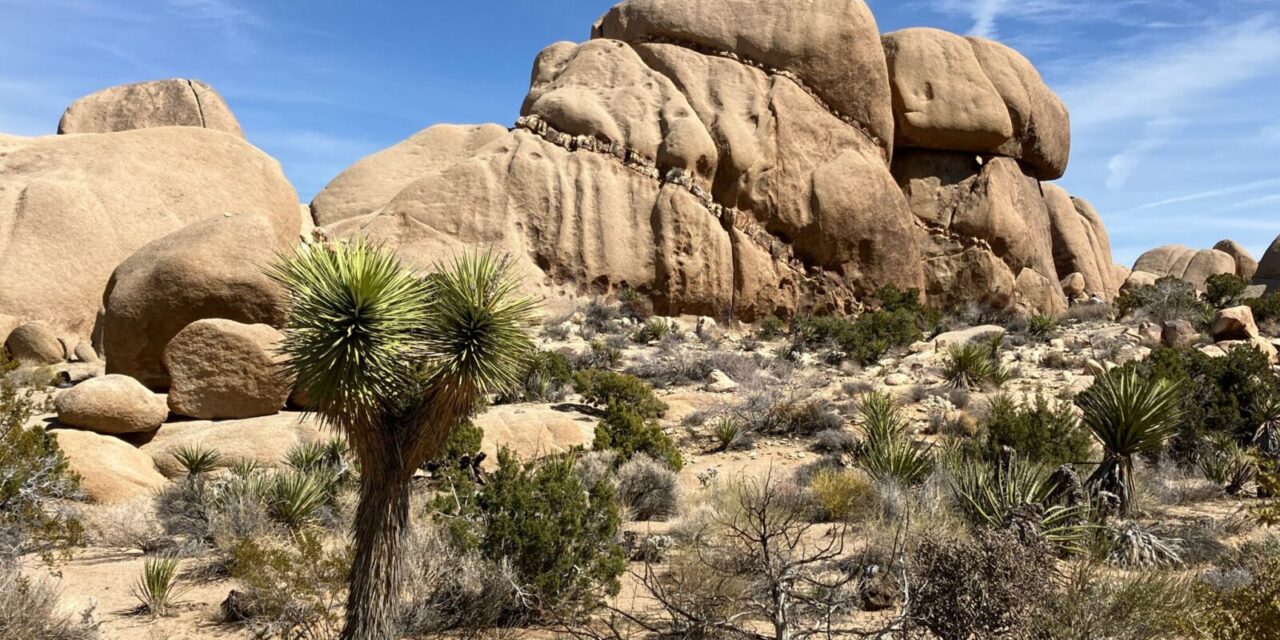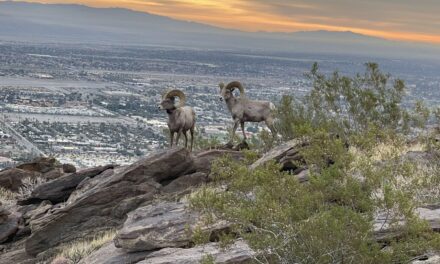Explore Split Rock Loop Trail in Joshua Tree National Park
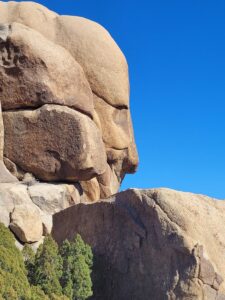
Wind and rain have sculpted Face Rock just off of the Split Rock Loop Trail at Joshua Tree National Park.
Day hikers on Joshua Tree National Park’s Split Rock Loop Trail can head through a collection of massive, rounded granite boulders that the park is so well known for.
Spring and fall mark the best time to hike the 2.25-miles round trip loop, with a couple of spurs, if only because temperatures will be most comfortable. Early morning right after dawn and late afternoon just before dusk offer the best lighting.
To reach the trail, take Calif. Hwy. 62 to the park’s north side. Use the north entrance, which is in Twentynine Palms. Turn right/south onto Park Boulevard, which is the park’s main east-west road. Take a right/northwest onto Split Rock Road. Park at the road’s end when it loops back upon itself. The trailhead is in the lots’ northeast corner.
You’ll immediately head through a cluster of monzogranite boulders.
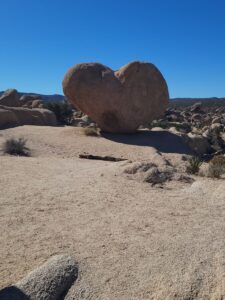
Sometimes erosion creates intriguing, fantastical shapes out of the boulders.
The park’s most noticeable geological feature, the monzogranite boulders and domes began forming about 180 million years as the North American and Pacific tectonic plates slipped past one another. This exposed the underground rock to high temperatures and high pressure, transforming it into molten liquid. The hot, liquid rock oozed upward and cooled, forming monzogranite.
At 0.4 miles, the trail crosses an intermittent stream. Just beyond it, another trail heads off into the neighboring mountain; continue left/southwest on the main route.
As California’s elevation rose over the past several millions of years, erosion has removed the softer rock covering the buried monzogranite. Some of the exposed boulders in the park are as tall as 20-story buildings.
The trail next recrosses the intermittent stream. At 1.35 miles, on the loop’s south side, you’ll reach Face Rock Trail. Turn right/south onto it, treating it as a spur.
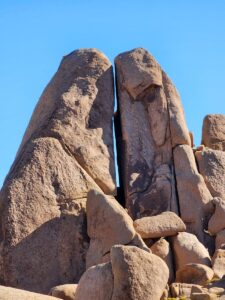
There are several “split” rocks along the Split Rock Loop Trail.
The monzogranite boulders were rectangular blocks when they formed underground. Water percolating down from the surface when the local climate was wetter rounded their corners. Once aboveground, wind and water continued the process and further sculpted them into various shapes – hearts, mini caves, and even human faces.
Such is the case with Face Rock, which you’ll arrive at about 1.55 miles from the trailhead. It most appears like a face when seen in profile. One nearby formation – Skull Rock – appears like it was ripped off a giant’s skeleton, but Face Rock resembles a living person.
After taking in the sight, return to the main trail. Upon reaching it at 1.75 miles, go right/northeast.
Joshua trees, yucca, juniper, cactus, teddy bear cholla, and various desert scrub provide the walk with some greenery, a pleasant complement to the beige rocks. Sunset is particularly great time to walk the trail as the plants’ green shines brilliantly against the rock, cast in an orange glow.
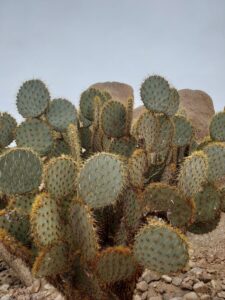
Cactus, Joshua trees, yucca, juniper and other desert plants provide some greenery to the trail.
At 2 miles, a spur heads to the right/southeast to the edge of several towering boulders. This adds 0.1 miles to your journey. From the spur, the parking lot is another 0.15 miles to the right/northeast.
Most of the hike is in the open sun, so be sure to lather on the sunscreen, wear a sunhat and sunglasses, and to carry extra water.
If scrambling over the rocks, be sure to keep your balance (the fall is a hard one) and never place your hands or feet into a crevice where you can’t see them, as there could be snakes resting there.
If you’re looking a spot to have lunch, the Split Rock Loop is a great place for one. A picnic table – and chipmunks looking for a handout – sits near the trailhead.
Image Sources
- 01-Wind-and-rain-have-sculpted-Face-Rock-just-off-of-the-Split-Rock-Loop-Trail-at-Joshua-Tree-National-Park.: Rob Bignell
- Sometimes erosion creates intriguing, fantastical shapes out of the boulders.: Rob Bignell
- There are several “split” rocks along the Split Rock Loop Trail.: Rob Bignell
- Cactus, Joshua trees, yucca, juniper and other desert plants provide some greenery to the trail.: Rob Bignell
- 02-The-monzogranite-boulders-along-Skull-Rock-Loop-Trail-began-forming-underground-some-180-million-years-ago.: Rob Bignell

